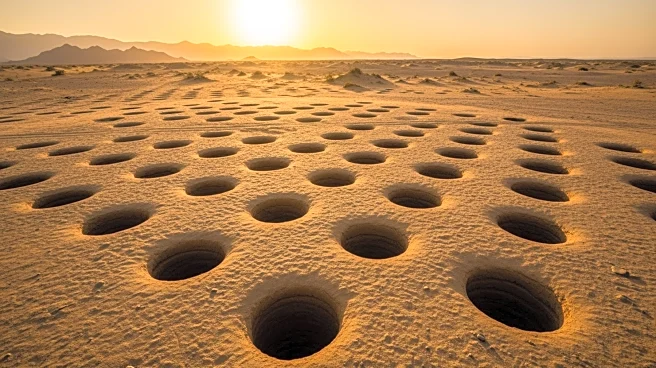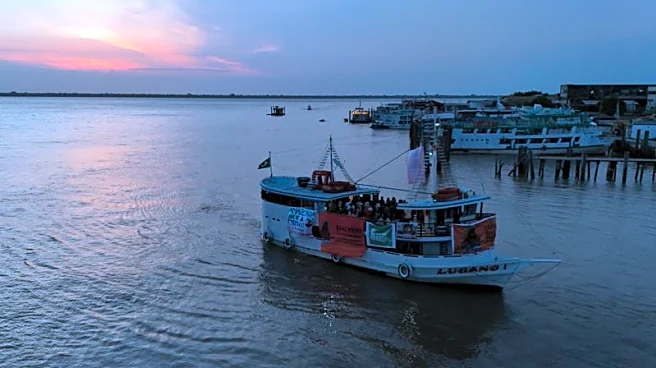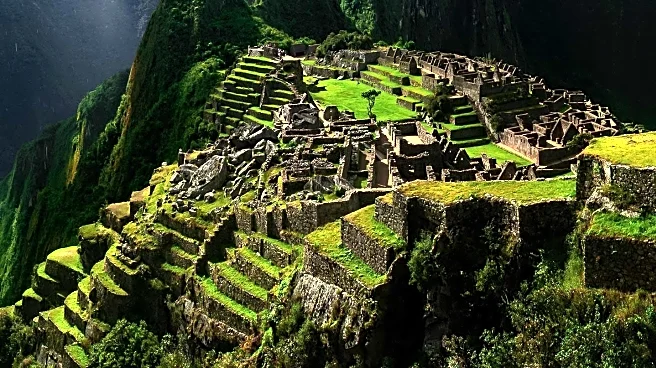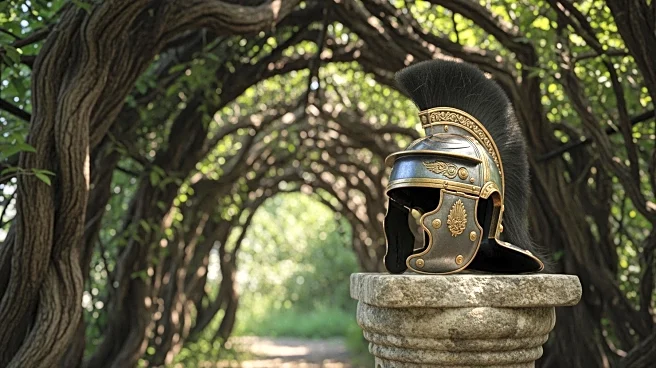What's Happening?
A recent study has shed light on the mysterious 'Band of Holes' in the Peruvian Andes, suggesting it was used as a marketplace for barter and accounting by the Chincha Kingdom and later the Inca Empire.
The site, located on Monte Sierpe, consists of approximately 5,200 holes arranged in ordered grids. Researchers utilized drone technology to analyze the layout, revealing mathematical patterns indicative of record-keeping methods. Samples from the holes contained pollen from crops like maize, suggesting they were used to store goods. The study, published in the journal Antiquity, posits that the site facilitated trade and interaction among local groups, reflecting ancient Andean accounting practices.
Why It's Important?
The discovery of the 'Band of Holes' as a marketplace provides significant insights into the economic and social structures of pre-Hispanic Andean societies. It highlights the advanced record-keeping and trade systems employed by the Chincha Kingdom and the Inca Empire, contributing to our understanding of indigenous accounting practices. This finding underscores the complexity of ancient Andean civilizations and their ability to modify landscapes to foster economic interaction. The study expands knowledge on the origins and diversity of barter marketplaces, offering a valuable case study in the history of trade and commerce in the region.
What's Next?
Further research may focus on exploring other similar sites in the Andes to understand the broader network of trade and accounting practices in ancient Peru. Archaeologists might employ advanced technologies like drones and sediment analysis to uncover more details about the economic activities of the Chincha Kingdom and the Inca Empire. Additionally, there could be efforts to preserve and protect these sites from potential threats, ensuring their historical significance is maintained for future studies.
Beyond the Headlines
The study of the 'Band of Holes' raises questions about the ethical considerations in preserving ancient sites and the cultural heritage of indigenous communities. It also prompts discussions on the legal frameworks needed to protect such sites from development and exploitation. The findings may influence cultural policies and educational programs aimed at promoting awareness of the rich history and contributions of Andean civilizations.













